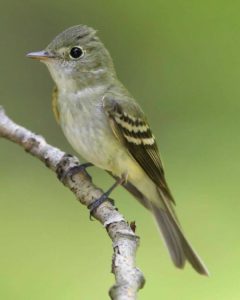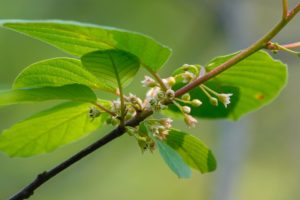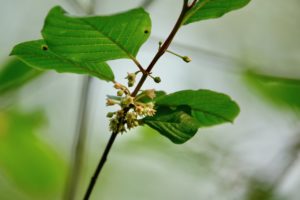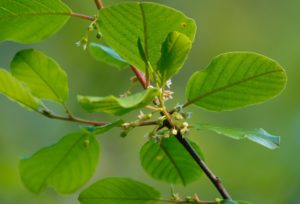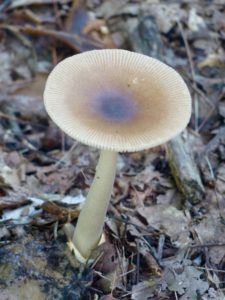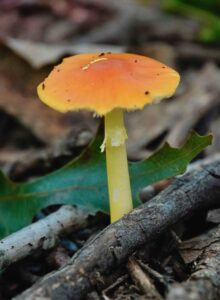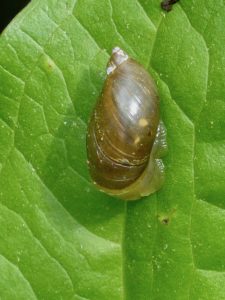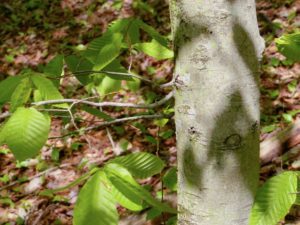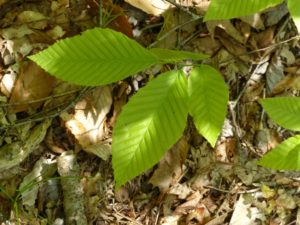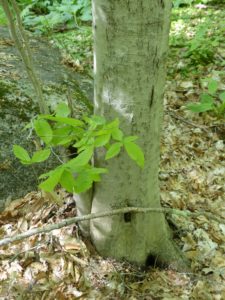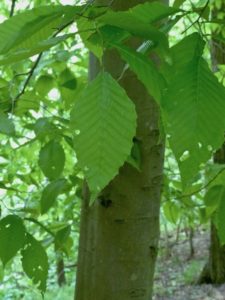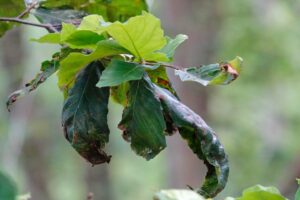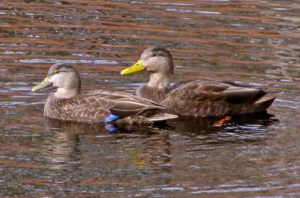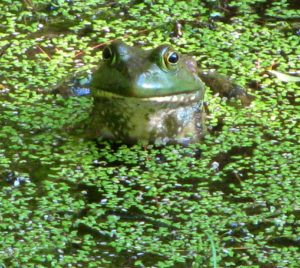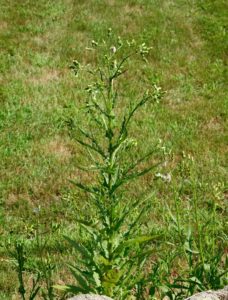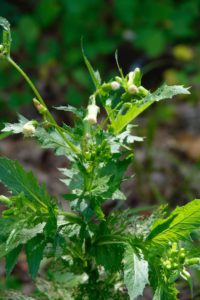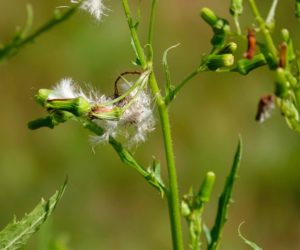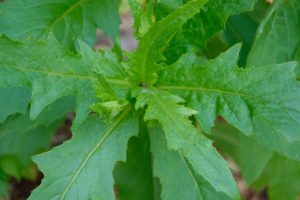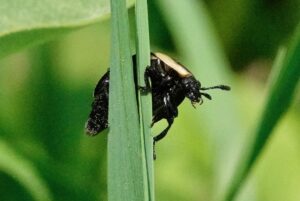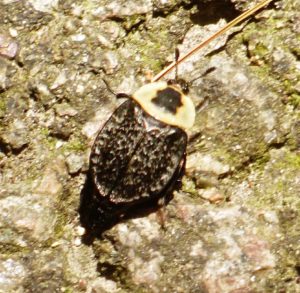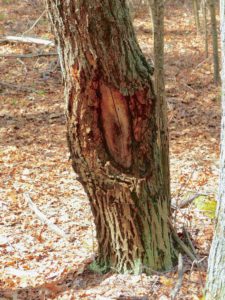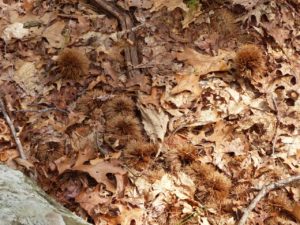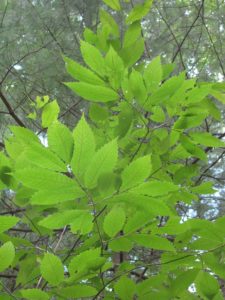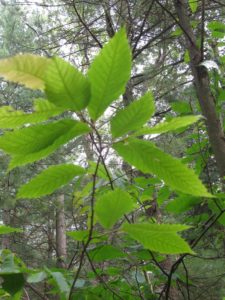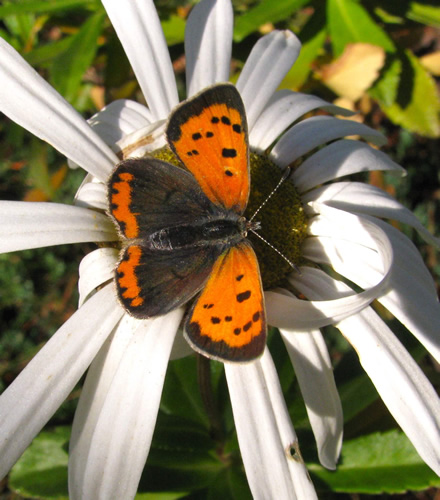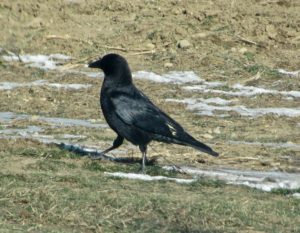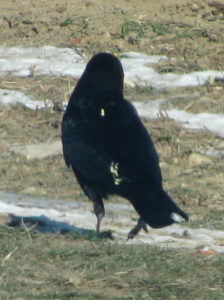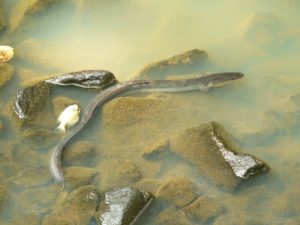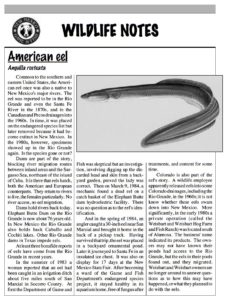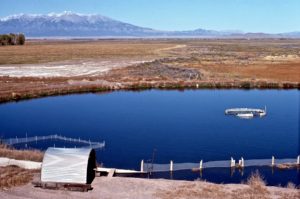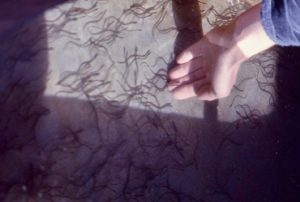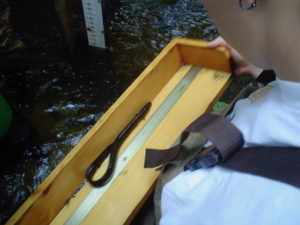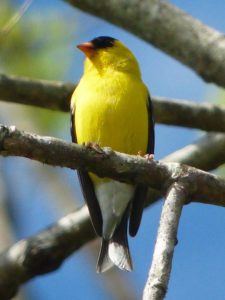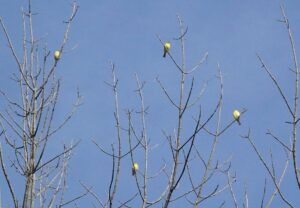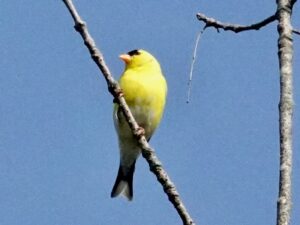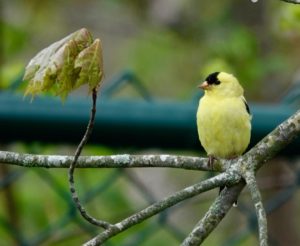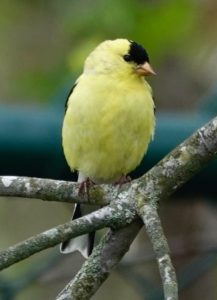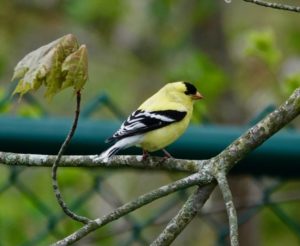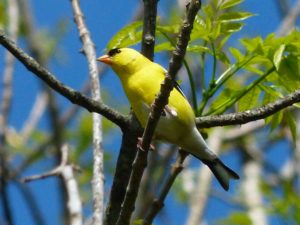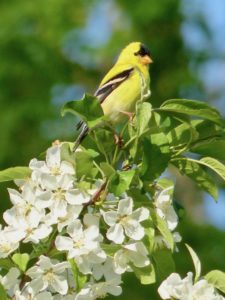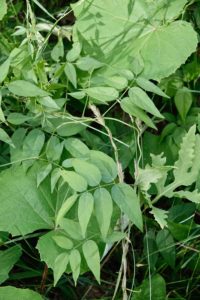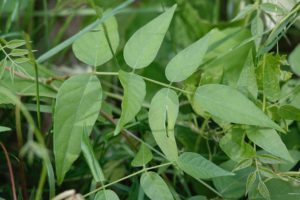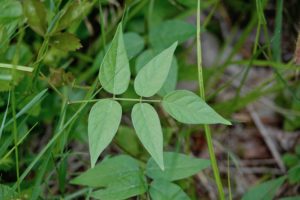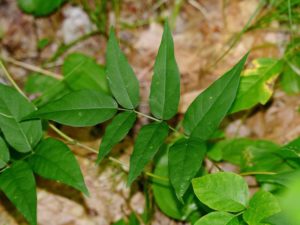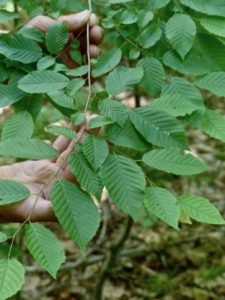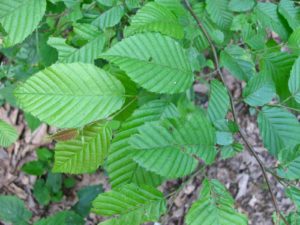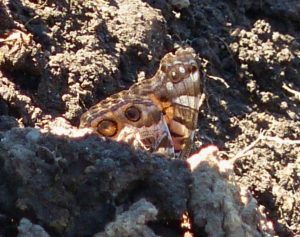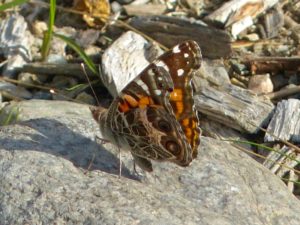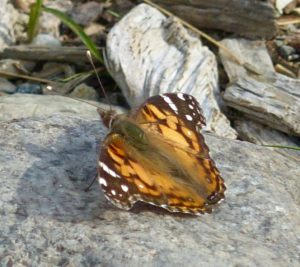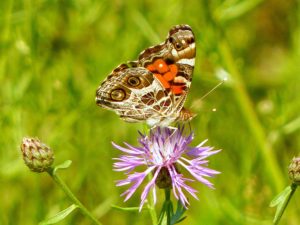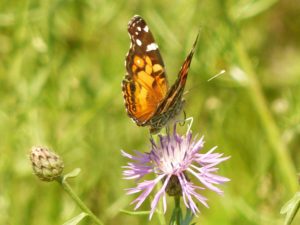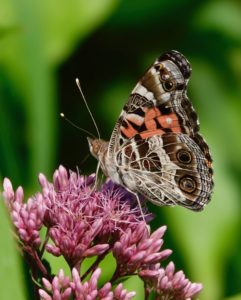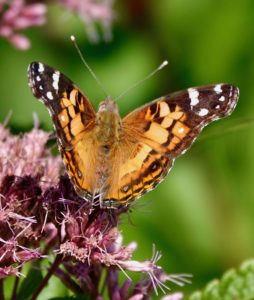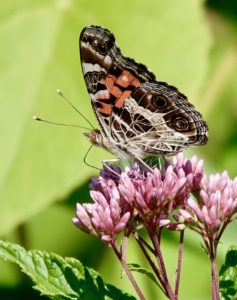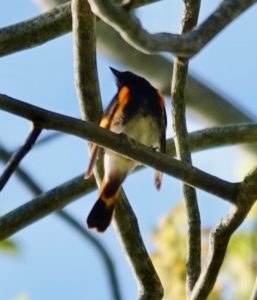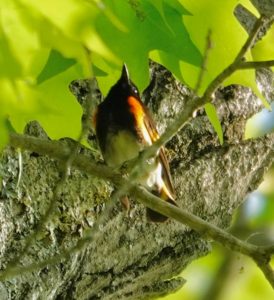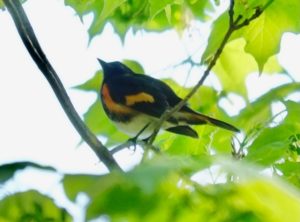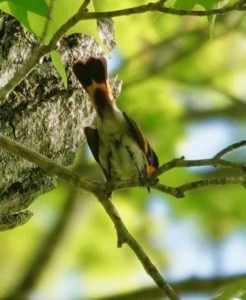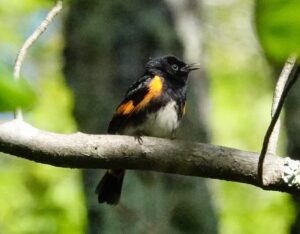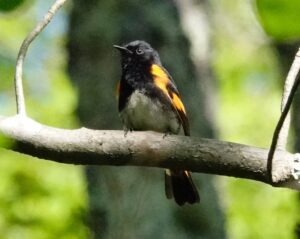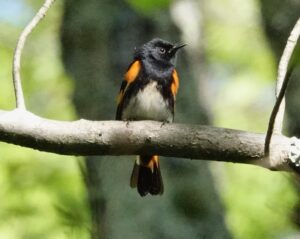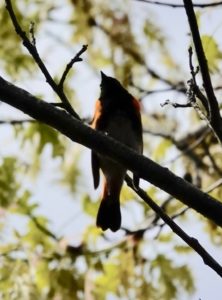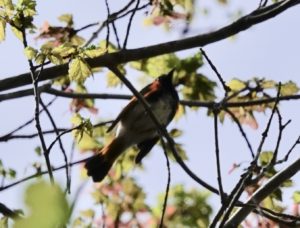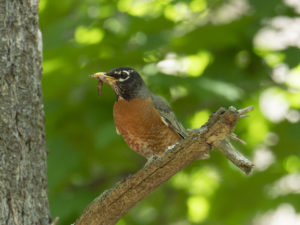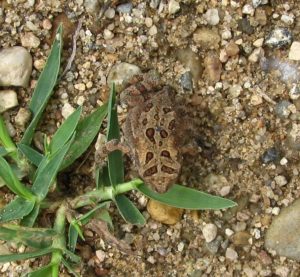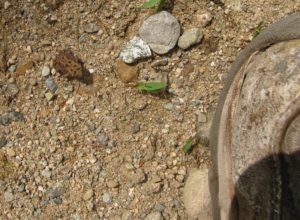Sightings grid
Observer: Barry Dulong
Observation Date: 6/2/24
Observation Time: 10:30 a.m.
Observation Location: Moose Hill Audubon Wildlife Sanctuary
Common Name: Acadian flycatcher
Scientific Name: Empidonax virescens
Comments: Picked up call on Merlin. Easy to spot chasing flying insects.
More Information: All About Birds
(The attached photo comes from the internet)
Observer: Paul Lauenstein
Observation Date: 5/23/23
Observation Time: 7:35 a.m.
Observation Location: Moose Hill Audubon WIldlife Sanctuary (boardwalk)
Common Name: Alder Buckthorn
Scientific Name: Frangula alnus
Comments: Alder buckthorn, also known as glossy buckthorn, is a tall shrub. I saw a hummingbird moving from tiny blossom to tiny blossom. Otherwise I probably would not have noticed that it was in bloom. I also saw some bees and wasps feeding on the tiny blossoms.
Alder buckthorn does not have thorns. It was introduced in eastern North America from Asia about a century ago. It is now widespread and invasive. Birds eat the berries when they ripen in fall.
More Information: Wikipedia
Observer: Paul Lauenstein
Observation Date: 8/15/18
Observation Time: 12:15 p.m.
Observation Location: Moose Hill Audubon Wildlife Sanctuary
Common Name: Amanita mushroom
Scientific Name: Amanita sp.
Comments: The genus of this mushroom is probably Amanita, but it’s hard to say which of the numerous species of Amanita this is. Mushrooms of the genus Amanita account for most mushroom-related deaths.
More information: MushroomExpert.com
Observer: Paul Lauenstein
Observation Date: 9/4/20
Observation Time: 1:30 p.m.
Observation Location: Moose Hill Farm
Common Name: Amanita mushroom
Scientific Name: Amanita sp.
Comments: The genus of this mushroom is probably Amanita, but it’s hard to say which of the numerous species of Amanita this is. Mushrooms of the genus Amanita account for most mushroom-related deaths.
More information: MushroomExpert.com
Observer: Paul Lauenstein
Observation Date: 5/19/19
Observation Time: 2:45 p.m.
Observation Location: Billings Loop Botanical Trail
Common Name: Amber Snail
Scientific Name: family Succineidae
Comments: This terrestrial snail was one of many crawling on a skunk cabbage leaf beside the trail.
More Information: Terrestrial Mollusc Tool
Observer: Paul Lauenstein
Observation Date: 5/19/19
Observation Time: 3:10 p.m.
Observation Location: Billings Loop Botanical Trail
Common Name: American Beech Tree
Scientific Name: Fagus grandifolia
Comments: These specimens were observed in a shady, wooded area. The American Beech is a shade-tolerant species, favoring shade more than other trees, commonly found in forests in the final stage of succession. Ecological succession is essentially the process of forests changing their composition through time; it is a pattern of events often observed on disturbed sites. Although sometimes found in pure stands, it is more often associated with sugar maple (forming the beech-maple climax community), yellow birch, and eastern hemlock, typically on moist well-drained slopes and rich bottomlands.
More Information: Wikipedia
Observer: Paul Lauenstein
Observation Date: 5/22/18
Observation Time: 10:45 a.m.
Observation Location: Town-owned conservation land near Sandy Ridge Circle
Common Name: American Beech tree
Scientific Name: Fagus grandifolia
Comments: The American Beech is a shade-tolerant species, favoring shade more than other trees, commonly found in forests in the final stage of succession. Ecological succession is essentially the process of forests changing their composition through time; it is a pattern of events often observed on disturbed sites. Although sometimes found in pure stands, it is more often associated with sugar maple (forming the beech-maple climax community), yellow birch, and eastern hemlock, typically on moist well drained slopes and rich bottomlands.
More Information: Wikipedia
Observer: Paul Lauenstein
Observation Date: 6/27/24
Observation Time: 6:30 p.m.
Observation Location: Massapoag Brook trail between Ames St. and Mann’s Pond
Common Name: American Beech Tree
Scientific Name: Fagus grandifolia
Comments: This beech tree is infected with Beech Leaf Disease (BLD). The disease kills and causes dieback of American beech trees. Since its discovery, BLD has been detected in 13 states, including Ohio, Connecticut, Delaware, Maine, Massachusetts, Michigan, New Hampshire, New York, New Jersey, Pennsylvania, Rhode Island, Virginia, West Virginia and the Canadian province of Ontario.
More Information: USDA Forest Service
Observer: Paul Lauenstein
Observation Date: 12/17/11
Observation Time: 11:40 a.m.
Observation Location: Sawmill Pond
Common Name: American Black Duck
Scientific Name: Anas rubripes
Comments: This pair of black ducks mingled with some Canada geese and mallards. Shooting photos of this pair reminded me of my grandfather, who lived on Cape Cod and used to shoot black ducks for food during the first half of the twentieth century before I was born.
More Information: Avian Web
Observer: Paul Lauenstein
Observation Date: 7/16/10
Observation Time: 5:25 a.m.
Observation Location: Beaver Brook near tennis court
Common Name: American Bullfrog
Scientific Name: Rana catesbeiana
Comments: Bullfrogs are voracious, opportunistic, ambush predators that prey on any small animal they can overpower and stuff down their throats. Bullfrog stomachs have been found to contain rodents, small reptiles, amphibians, crayfish, birds, and bats, as well as the many invertebrates, such as insects, which are the usual food of ranid frogs. These studies revealed the bullfrog’s diet to be unique among North American ranids in the inclusion of a large percentage of aquatic animals, such as fish, tadpoles, ram’s horn snails, and dytiscid beetles. Bullfrogs can capture large, strong prey because of the powerful grip of their jaws after the initial ranid tongue strike.
More Information: Wikipedia
Observer: Rita Corey
Observation Date: 8/13/20
Observation Time: 2:00 p.m.
Observation Location: Rattlesnake Hill
Common Name: American burnweed (a.k.a. fireweed)
Scientific Name: Erechtites hieraciifolius
Comments: Burnweed is a native annual in the daisy family, Asteraceae. American Burnweed is an underrated and unappreciated wild edible. Although Burnweed has no history as a food source here in America, everywhere else in the world where it grows it is eaten. It’s a common food in all of Asia and most of Europe. It also has medicinal properties2. The oil derived from the plant can be used to treat wounds, hemorrhages, poison ivy rashes, and other ailments such as piles.
Burnweed got its unique name by being one of the first plants to grow after a fire has burned out an area. Burnweed is also referred to as fireweed.
More Information: Go Botany
Observer: Paul Lauenstein
Observation Date: 6/4/24
Observation Time: 12:40 p.m.
Observation Location: Moose Hill Farm (T.T.O.R.)
Common Name: American Carrion Beetle
Scientific Name: Necrophilia americana
Comments: From spring through fall, during daylight, a few hours after flies begin arriving at a carcass, the adult beetles will arrive as well. They immediately begin eating the already hatching fly larvae, mating, and laying their own eggs. As long as the carcass lasts, the adults will remain eating competitors to give their own larvae a chance to eat and grow. Upon hatching from the eggs, the larvae will eat both the carcass and other larvae that are within it. Eventually the larvae will fall to the ground, dig into the dirt, and pupate. Overwintering is done by adults.
More Information: Wikipedia
Observer: Paul Lauenstein
Observation Date: 8/6/15
Observation Time: 12:50 p.m.
Observation Location: Gavins Pond area
Common Name: American Carrion Beetle
Scientific Name: Necrophilia americana
Comments: From spring through fall, during daylight, a few hours after flies begin arriving at a carcass, the adult beetles will arrive as well. They immediately begin eating the already hatching fly larvae, mating, and laying their own eggs. As long as the carcass lasts, the adults will remain eating competitors to give their own larvae a chance to eat and grow. Upon hatching from the eggs, the larvae will eat both the carcass and other larvae that are within it. Eventually the larvae will fall to the ground, dig into the dirt, and pupate. Overwintering is done by adults.
More Information: Wikipedia
Observer: Paul Lauenstein
Observation Date: 4/19/15
Observation Time: 2:35 p.m.
Observation Location: Moose Hill Audubon Wildlife Sanctuary
Common Name: American Chestnut
Scientific Name: Castanea dentata
Comments: American chestnut was once very common in New England, but it has been practically wiped out by the chestnut blight, a pathogenic fungus. The fungus does not kill the roots, which continue to send up shoots for years. However, the fungus usually prevents the shoots from maturing into nut-bearing trees.
More Information: Wikipedia
This chestnut tree in the woods at Moose Hill has managed to survive despite being partially girdled by the blight. It has actually grown large enough to produce nuts.
Chestnuts on the ground:
This photo taken 8/6/10 shows what American Chestnut leaves look like:
Observer: Paul Lauenstein
Observation Date: 6/24/10
Observation Time: 3:45 p.m.
Observation Location: Beaver Brook near tennis courts
Common Name: American Chestnut Tree
Scientific Name: Castanea dentata
Comments: The term “dentata” in the scientific name refers to the “teeth” around the edges of the leaves. American chestnut trees were decimated by chestnut blight. Remnant root systems continue to send up shoots such as those shown in the photos, but the blight prevents most of these shoots from getting large enough to produce nuts.
More Information: Wikipedia
Observer: Paul Lauenstein
Observation Date: 10/18/12
Observation Time: 2:15 p.m.
Observation Location: 4 Gavins Pond Road (front yard)
Common Name: American Copper Butterfly
Scientific Name: Lycaena phlaeas
Comments: This small but colorful butterfly can be seen all summer and into the fall.
More Information: Butterflies and Moths
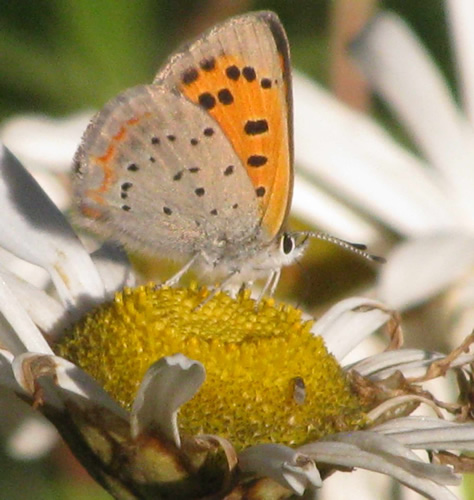
Observer: Paul Lauenstein
Observation Date: 5/12/12
Observation Time: 6:00 p.m.
Observation Location: Furnace St. under high tension wires
Common Name: American Copper Butterfly
Scientific Name: Lycaena phlaeas
Comments: This individual was chasing another to mate.
More Information: Butterflies and Moths
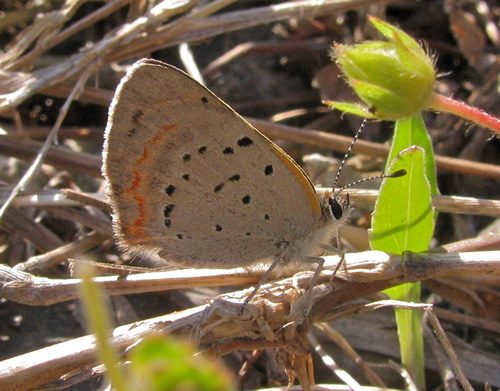
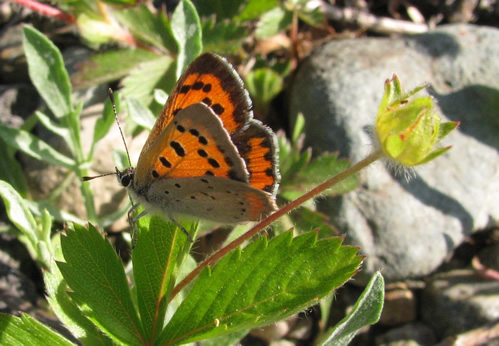
Observer: Paul Lauenstein
Observation Date: 5/21/14
Observation Time: 1:20 p.m.
Observation Location: field near Gavins Pond dam
Common Name: American Copper Butterfly
Scientific Name: Lycaena phlaeas
Comments: Like many small butterflies, the American copper
is a stunning sight when viewed up close.
More Information: Butterflies and Moths
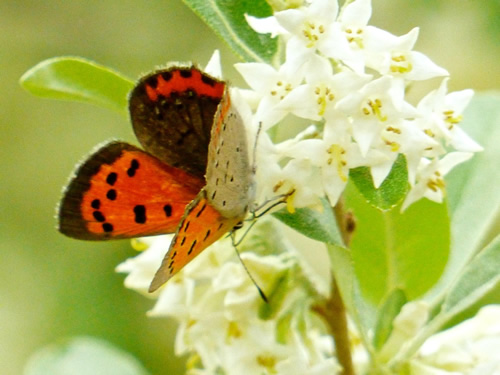
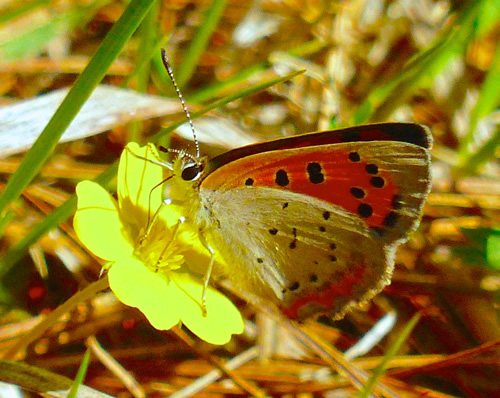
Observer: Paul Lauenstein
Observation Date: 12/12/09
Observation Time: 11:40 a.m.
Observation Location: Wolomolopoag Street (Ward’s Barry Farm)
Common Name: American Crow (mutant)
Scientific Name: Corvus brachyrhynchos
Comments: This mutant crow has a few white feathers mingled among the normally black feathers.
More Information: All About Birds: White Crow
Observer: Paul Lauenstein
Observation Date: 7/21/14
Observation Time: 10:15 a.m.
Observation Location: Billings Brook below the Gavins Pond Dam
Common Name: American eel
Scientific Name: Anguilla rostrata
Comments: American eels spawn in the Sargasso Sea in the Atlantic Ocean. The larval eels, called glass eels because they are transparent, drift with the Gulf Stream up the east coast. They eventually metmorphose into worm-sized black elvers, which swim up coastal rivers all along the east coast. This eel came into Narragansett Bay and swam up the Taunton River and then up Billings Brook to Sharon. Eels mature for several years in fresh water. When they reach three or four feet in length, they turn into silver eels and migrate all the way back to the Sargasso Sea, where they spawn and die.
Note the dead sunfish in the photo. Pumping of Well #5 and Well #7 along Billings Brook upstream of Gavins Pond to provide water for lawn irrigation reduced flow in Billings Brook so much that water stopped spilling out of Gavins Pond. With no flow, the water in the pool below the dam stagnated so there was not enough dissolved oxygen for fish to survive.
More Information: Wikipedia
Following is the story of how eels were blocked by dams from swimming up rivers such as the Rio Grande, but mysteriously reappeared in the Rio Grande in the early 1980s.
I was the one who put them there. I was the manager of a fish farm in Alamosa, CO from 1977 to 1980. We decided to try to grow eels and export them to Japan where they are considered a delicacy. I flew to North Carolina where I caught a bunch of elvers and brought them back to the fish farm in Alamosa. We tried to grow them but they escaped to the nearby Rio Grande.
Weisbart’s fish farm in Alamosa, Colorado
elvers imported to Alamosa from North Carolina in 1979
Observer: Paul Lauenstein
Observation Date: 8/25/08
Observation Time: 10:00 a.m.
Observation Location: Beaver Brook near the outbound train station
Common Name: American eel
Scientific Name: Anguilla rostrata
Comments: American eels spawn in the Sargasso Sea in the Atlantic Ocean. The larval eels, called glass eels because they are transparent, drift with the Gulf Stream up the east coast. They eventually metmorphose into worm-sized black elvers, which swim up coastal rivers all along the east coast. This eel came into Boston Harbor and swam up the Neponset River and then up Beaver Brook to Sharon. Eels mature for several years in fresh water. When they reach three or four feet in length, they turn into silver eels and migrate back to the Sargasso Sea, where they spawn and die.
More Information: Wikipedia
Observer: Paul Lauenstein
Observation Date: 5/13/15
Observation Time: 9:35 a.m.
Observation Location: Moose Hill Audubon Wildlife Sanctuary
Common Name: American Goldfinch
Scientific Name: Spinus tristis
Comments: One of Sharon’s most striking – and most common – songbirds. Goldfinches are frequent visitors to bird feeders.
More Information: Audubon Guide to N. American Birds
Observer: Paul Lauenstein
Observation Date: 5/13/25
Observation Time: 8:00 a.m.
Observation Location: Moose Hill Audubon Wildlife Sanctuary (Billings Loop)
Common Name: American Goldfinch
Scientific Name: Carduelis tristis
Comments: This common finch travels in groups. These four were high in a dead tree. The morning sun made them glow yellow.
The goldfinch’s song sounds like “per-chick-o-ree, per-chick-o-ree” interspersed with an occasional mewing sound.
More Information: All About Birds
Observer: Paul Lauenstein
Observation Date: 5/15/20
Observation Time: 9:35 a.m.
Observation Location: Flume house near the Lake Massapoag boat ramp
Common Name: American Goldfinch (male)
Scientific Name: Carduelis tristis
Comments: This common finch travels in groups. Its song sounds like “per-chick-o-ree, per-chick-o-ree” interspersed with an occasional mewing sound.
More Information: All About Birds
Observer: Paul Lauenstein
Observation Date: 5/23/16
Observation Time: 8:50 a.m.
Observation Location: Moose Hill Audubon Wildlife Sanctuary
Common Name: American Goldfinch
Scientific Name: Carduelis tristis
Comments: This common finch travels in groups. Its song sounds like “per-chick-o-ree, per-chick-o-ree” interspersed with an occasional mewing sound.
More Information: All About Birds
Observer: Josh Simons
Observation Date: 6/25/11
Observation Time: 1:00 p.m.
Observation Location: Moose Hill area
Common Name: American Goldfinch
Scientific Name: Carduelis tristis
Comments: The first photo is of a female; the second a male.
More Information: All About Birds
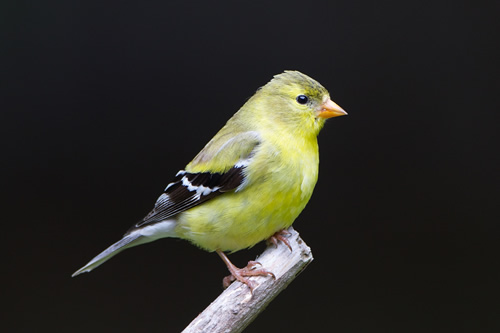
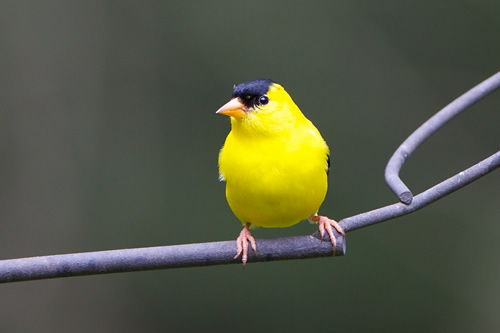
Observer: Paul Lauenstein
Observation Date: 5/19/19
Observation Time: 6:55 a.m.
Observation Location: Moose Hill Audubon Wildlife Sanctuary
Common Name: American Goldfinch (male)
Scientific Name: Carduelis tristis
Comments: This common finch travels in groups. Its song sounds like “per-chick-o-ree, per-chick-o-ree” interspersed with an occasional mewing sound.
More Information: All About Birds
Observer: Paul Lauenstein
Observation Date: 6/13/20
Observation Time: 5:30 p.m.
Observation Location: Moose Hill Audubon Wildlife Sanctuary
Common Name: American Groundnut
Scientific Name: Apios americana
Comments: Apios americana is found in every state east of the Rocky Mountains. It is a perennial vine that grows to 10 feet long in wet areas – marshy meadows and thickets, stream and pond banks, and moist woodlands. Both the tuber and the seeds are edible. Apios americana was a noteworthy food of both native Americans as well as early colonists of New England. It is a good source of carbohydrates and protein.
More Information: Wildflowers of the United States
Observer: Paul Lauenstein
Observation Date: 7/11/15
Observation Time: 1:36 p.m.
Observation Location: near Gavins Pond
Common Name: American Groundnut
Scientific Name: Apios americana
Comments: Apios americana is found in every state east of the Rocky Mountains. It is a perennial vine that grows to 10 feet long in wet areas – marshy meadows and thickets, stream and pond banks, and moist woodlands. Both the tuber and the seeds are edible. Apios americana was a noteworthy food of both native Americans as well as early colonists of New England. It is a good source of carbohydrates and protein.
More Information: Wildflowers of the United States
Observer: Paul Lauenstein
Observation Date: 6/23/19
Observation Time: 10:45 p.m.
Observation Location: Billings Loop Botanical Trail
Common Name: American Hornbeam
Scientific Name: Carpinus caroliniana
Comments: The common English name hornbeam derives from the hardness of the wood (likened to animal horn) and the Old English beam, meaning “tree” (cognate with German Baum). The American hornbeam is also occasionally known as blue-beech, ironwood, or musclewood, the first from the resemblance of the bark to that of the American beech Fagus grandifolia, the other two from the hardness of the wood and the muscular appearance of the trunk, respectively. Hornbeams are used as food plants by the larvae of some Lepidoptera species (i.e. butterflies and moths), including autumnal moth, common emerald, feathered thorn, walnut sphinx, Svensson’s copper underwing, and winter moth.
More Information: Wikipedia
Observer: Paul Lauenstein
Observation Date: 6/4/11
Observation Time: 4:20 p.m.
Observation Location: Conservation land near Billings Street
Common Name: American Hornbeam
Scientific Name: Carpinus caroliniana
Comments: The common English name hornbeam derives from the hardness of the wood (likened to animal horn) and the Old English beam, meaning “tree” (cognate with German Baum). The American hornbeam is also occasionally known as blue-beech, ironwood, or musclewood, the first from the resemblance of the bark to that of the American beech Fagus grandifolia, the other two from the hardness of the wood and the muscular appearance of the trunk, respectively. Hornbeams are used as food plants by the larvae of some Lepidoptera species (i.e. butterflies and moths), including autumnal moth, common emerald, feathered thorn, walnut sphinx, Svensson’s copper underwing, and winter moth.
More Information: Wikipedia
Observer: Paul Lauenstein
Observation Date: 10/5/12
Observation Time: 3:55 p.m.
Observation Location: 4 Gavins Pond Road
Common Name: American Lady Butterfly
Scientific Name: Vanessa virginiensis
Comments: This American Lady butterfly was feeding on Nippon daisies blooming in our garden. There was also a Painted Lady butterfly, which looks very similar, but has four small spots on the undersides of its trailing wings instead of the American Lady’s two large ones.
More Information: BugGuide
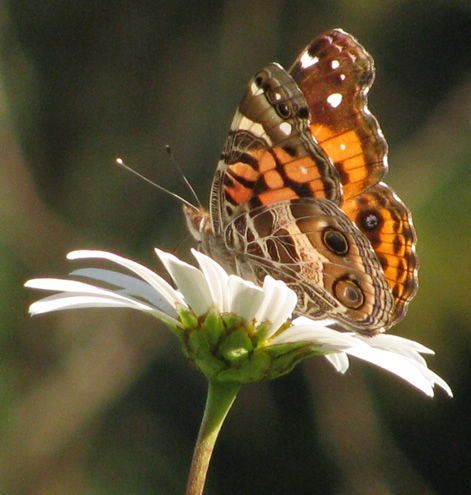
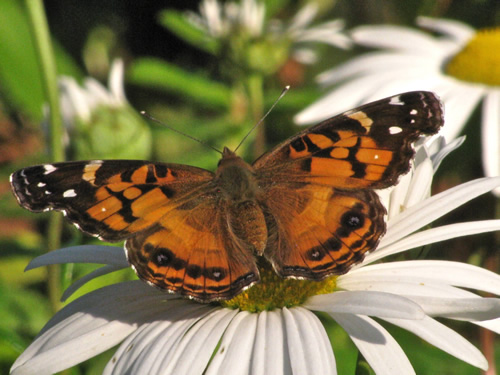
Observer: Paul Lauenstein
Observation Date: 5/12/12
Observation Time: 6:15 p.m.
Observation Location: Gavins Pond Road near Well #5
Common Name: American Lady Butterfly
Scientific Name: Vanessa virginiensis
Comments: American lady butterflies (V. virginiensis) have two large eyespots on the underside of the hind wing, whereas similar-looking painted lady butterflies (V. cardui) have four small eyespots. This individual was feeding on a flowering shrub.
More Information: See Butterflies and Moths of North America.
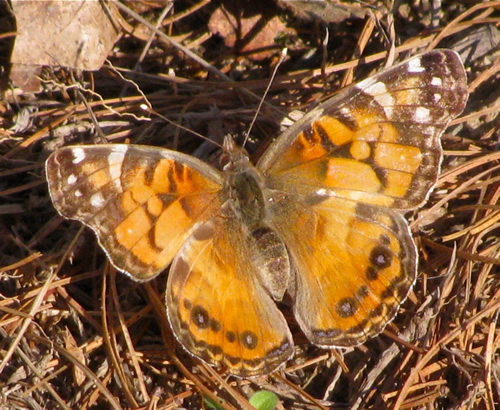
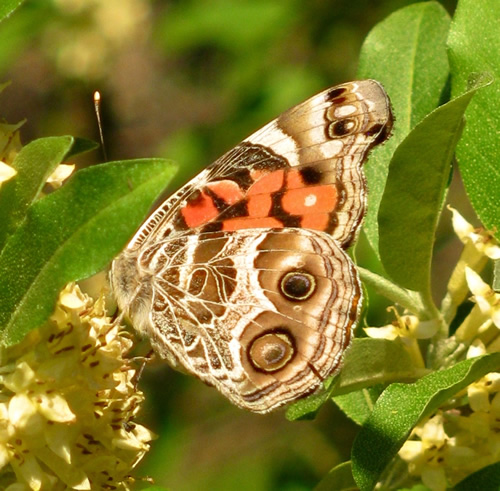
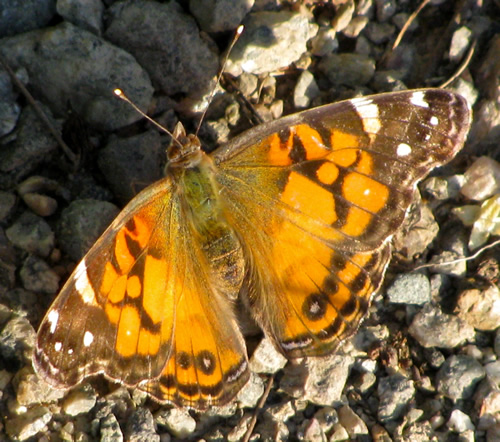
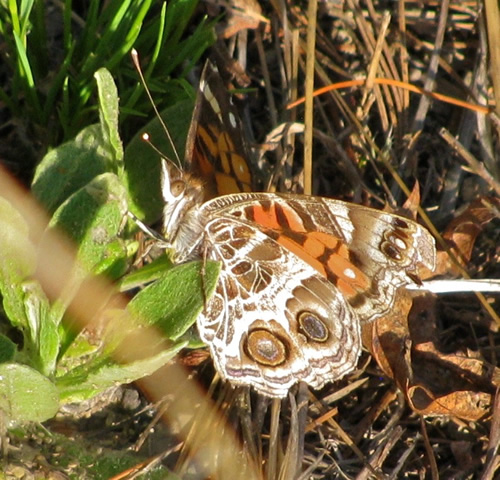
Observer: Paul Lauenstein
Observation Date: 5/26/19
Observation Time: 1:15 p.m.
Observation Location: Moose Hill Farm (formerly the Kendall Estate)
Common Name: American Lady butterfly
Scientific Name: Vanessa virginiensis
Comments: American Lady butterflies look a lot like Painted Lady butterflies. The American Lady has two large spots on the undersides of its trailing wings. The Painted Lady has four smaller spots instead. This Amerian Lady was visiting a mud puddle, but it flew off before I could get a better photo.
More Information: BugGuide
Observer: Paul Lauenstein
Observation Date: 5/27/19
Observation Time: 5:20 p.m.
Observation Location: under the high tension wires across the street from Ward’s Berry Farm
Common Name: American Lady butterfly
Scientific Name: Vanessa virginiensis
Comments: American Lady butterflies look a lot like Painted Lady butterflies. The American Lady has two large spots on the undersides of its trailing wings. The Painted Lady has four smaller spots instead. This Amerian Lady was visiting a mud puddle, but it flew off before I could get a better photo.
More Information: Butterflies and Moths of North America
Observer: Paul Lauenstein
Observation Date: 6/24/11
Observation Time: 2:15 p.m.
Observation Location: Gavins Pond
Common Name: American Lady Butterfly
Scientific Name: Vanessa virginiensis
Comments: American Lady butterflies have two distinctive eyespots on the brown underside of the lower wings. The upper sides of the wings are orange and black.
More Information: See: http://bugguide.net/node/view/236368
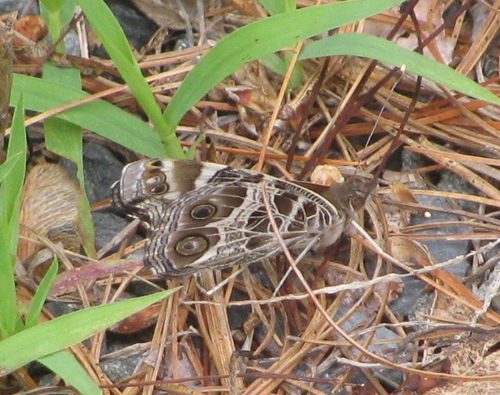
Observer: Paul Lauenstein
Observation Date: 7/11/15
Observation Time: 2:35 p.m.
Observation Location: Gavins Pond
Common Name: American Lady butterfly
Scientific Name: Vanessa virginiensis
Comments: American Lady butterflies look a lot like Painted Lady butterflies. The American Lady has two large spots on the undersides of its trailing wings. The Painted Lady has four smaller spots instead. This Amerian Lady was feeding on a spotted knapweed blossom.
More Information: BugGuide
Observer: Paul Lauenstein
Observation Date: 8/18/20
Observation Time: 11:40 a.m.
Observation Location: Moose Hill Farm (formerly the Kendall Estate)
Common Name: American Lady butterfly
Scientific Name: Vanessa virginiensis
Comments: American Lady butterflies look a lot like Painted Lady butterflies. The American Lady has two large spots on the undersides of its trailing wings. The Painted Lady has four smaller spots instead. This Amerian Lady was feeding on a blossom of a Joe Pye weed.
More Information: Butterflies and Moths of North America
Observer: Paul Lauenstein
Observation Date: 5/11/23
Observation Time: 8:00 a.m.
Observation Location: Moose Hill Audubon Wildlife Sanctuary
Common Name: American redstart
Scientific Name: Setophaga ruticilla
Comments: Redstarts are members of the warbler family. Their song is variable, and can be confused with the songs of some other warblers. See: http://www.allaboutbirds.org/
More Information: All About Birds
Observer: Paul Lauenstein
Observation Date: 5/12/25
Observation Time: 8:45 a.m.
Observation Location: Moose Hill Audubon Wildlife Sanctuary
Common Name: American redstart
Scientific Name: Setophaga ruticilla
Comments: Redstarts are members of the warbler family. Their song is variable, and can be confused with the songs of some other warblers. See: http://www.allaboutbirds.org/
More Information: All About Birds
Observer: Paul Lauenstein
Observation Date: 5/16/15
Observation Time: 8:30 a.m.
Observation Location: Moose Hill Audubon Wildlife Sanctuary
Common Name: American redstart
Scientific Name: Setophaga ruticilla
Comments: Redstarts are members of the warbler family. Their song is variable, and can be confused with the songs of some other warblers. See: http://www.allaboutbirds.org/
More Information: All About Birds
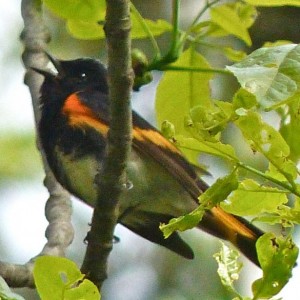
Observer: Paul Lauenstein
Observation Date: 5/17/20
Observation Time: 9:00 a.m.
Observation Location: wooded trail near Gavins Pond
Common Name: American redstart
Scientific Name: Setophaga ruticilla
Comments: Redstarts are members of the warbler family. Their song is variable, and can be confused with the songs of some other warblers. See: http://www.allaboutbirds.org/
More Information: All About Birds
Observer: Josh Simons
Observation Date: 5/31/20
Observation Time: 2:15 p.m.
Observation Location: Moose Hill area
Common Name: American Robin
Scientific Name: Turdus migratorius
Comments: Robins eat different types of food depending on the time of day: more earthworms in the morning and more fruit later in the day. Because the robin forages largely on lawns, it is vulnerable to pesticide poisoning and can be an important indicator of chemical pollution.
Although robins are considered harbingers of spring, many American Robins spend the whole winter in their breeding range. But because they spend more time roosting in trees and less time in your yard, you’re much less likely to see them. The number of robins present in the northern parts of the range varies each year with the local conditions.
Robins eat a lot of fruit in fall and winter. When they eat honeysuckle berries exclusively, they sometimes become intoxicated.
More Information: All About Birds
Observer: Paul Lauenstein
Observation Date: 6/2/10
Observation Time: 6:05 p.m.
Observation Location: 4 Gavins Pond Road
Common Name: American Robin (eggs)
Scientific Name: Turdus migratorius
More Information: All About Birds
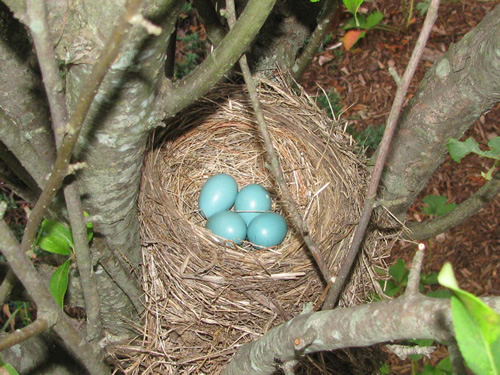
Observer: James Berkland
Observation Date: 6/20/14
Observation Location: 161 Upland Street
Common Name: American Robin (leucistic)
Scientific Name: Turdus migratorius
More Information: All About Birds: Color Variations
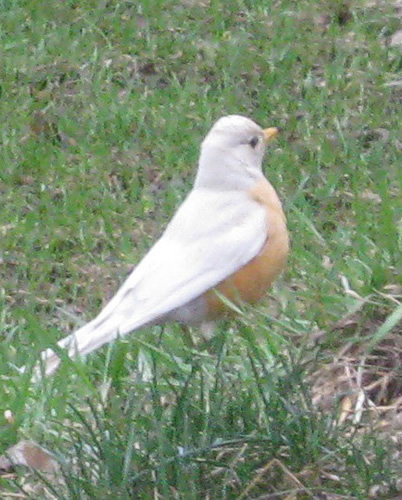
Observer: Paul Lauenstein
Observation Date: 5/26/14
Observation Time: 11:50 p.m.
Observation Location: Borderland State Park
Common Name: American Toad
Scientific Name: Anaxyrus americanus
Comments: Toads eat insects, so whenever I find one, I release it in my garden.
More Information: Wikipedia
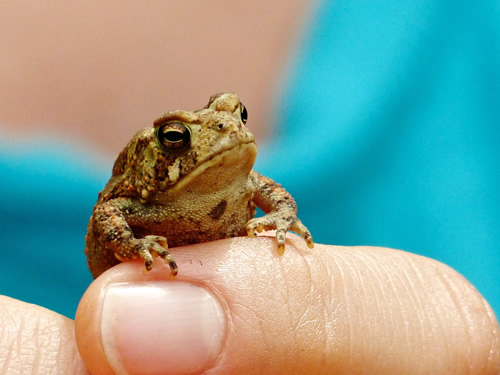
Observer: Paul Lauenstein
Observation Date: 6/17/13
Observation Time: 4:15 p.m.
Observation Location: Gavins Pond Dam
Common Name: American Toad
Scientific Name: Anaxyrus americanus
More Information: Wikipedia
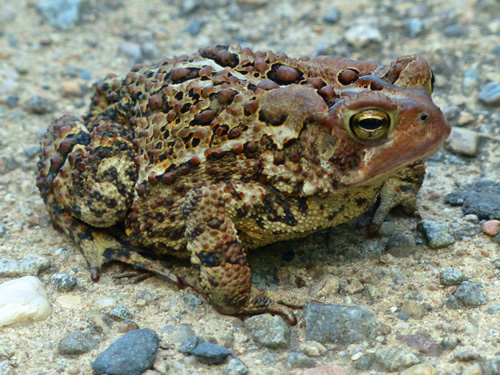
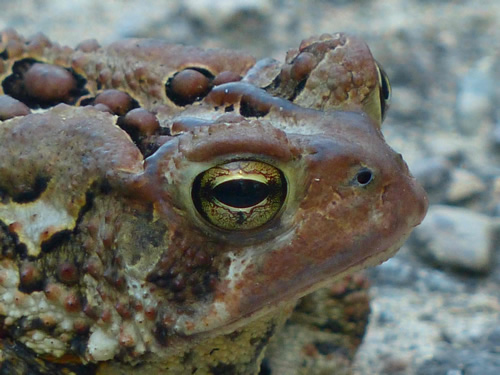
Baby toad nearby:
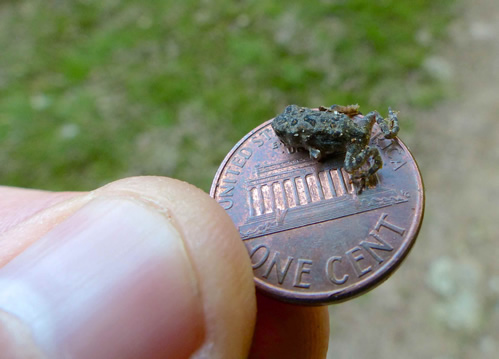
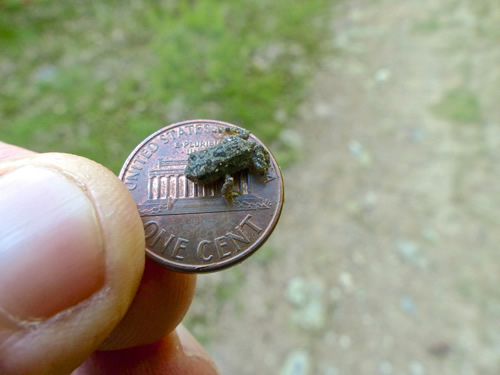
Observer: Paul Lauenstein
Observation Date: 7/16/10
Observation Time: 9:55 a.m.
Observation Location: near Gavins Pond
Common Name: American Toad (juvenile)
Scientific Name: Anaxyrus americanus
Comments: Note toe of shoe in photo to get an idea of the small size of this toad.
More Information: Wikipedia
Observer: Paul Lauenstein
Observation Date: 9/13/09
Observation Time: 2:30 p.m.
Observation Location: Bay Circuit Trail near Gorwin Drive
Common Name: American Toad
Scientific Name: Anaxyrus americanus
Comments: Notice how well this toad is camouflaged.
More Information: Animal Diversity Web

Observer: Vin Zollo
Observation Date: 5/30/13
Observation Time: 10:45 a.m.
Observation Location: Lake Massapoag
Common Name: American White Pelican
Scientific Name: Pelecanus erythrorhynchos
Comments: Originally spotted by Valerie White while canoeing on the lake. This is a rare bird in Massachusetts and a possible first record for Norfolk County. It was there for about a day and a half. Phone-scoped picture.
Another photo can be found on Flickr.
More Information: All About Birds


